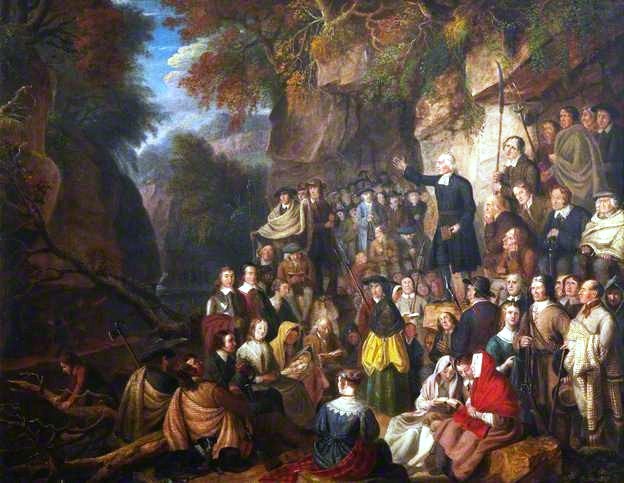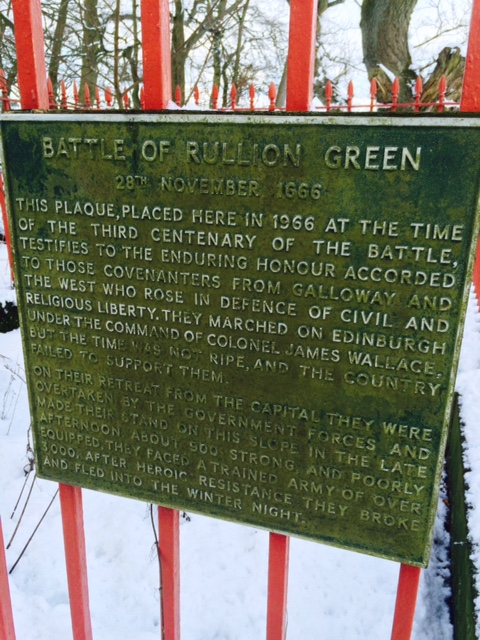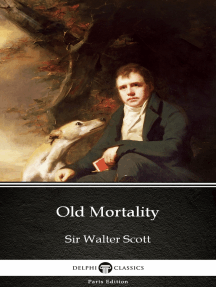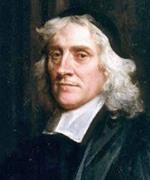“Universally beloved, singularly pious and of considerable learning”
So wrote the Rev Robert Wodrow after MacKail’s death by hanging at the Market Cross in Edinburgh on 22nd December 1666. His crime – he was a Covenanter.
Hugh MacKail was born in Liberton Parish, near Edinburgh in 1640, his father the Rev Mathew MacKail, also a minister, had been forced out of his parish in Bothwell due to his religious beliefs. At a young age he went to live with his uncle Hugh MacKail who was also a minister of Trinity College Church which was founded in 1460 by Mary of Geldres, consort to James II and stood below Calton Road in Edinburgh. He attended Edinburgh University where he studied for the ministry and distinguished himself, graduating in 1658. After graduation, he became the chaplain and tutor to the family of Sir James Steuart of Coltness and Goodtrees, the then Lord Provost of Edinburgh. The estate of Goodtrees in later years became known as Moredun and was situated within Liberton parish.
In 1661, now 21, he became licensed to preach in Edinburgh where he delivered various sermons with much success and public support. In September 1662, he preached a sermon in the High Kirk in Edinburgh, which was deemed to be treasonable. He declared that:
“The Church of Scotland had been persecuted by an Ahab on the throne, a Haman in the state, and a Judas in the Church”
This gave so much offense to those whose words this was aimed at, that a party of horsemen was sent to apprehend him. Escaping capture, he went to his father’s house where he lay concealed for some time and eventually left to live in Holland. In Holland for four years, he further improved his studies at a Dutch University, becoming renowned among his peers and gaining a reputation for his keen intellect and charismatic style of preaching.

In 1666 he left Holland and returned to live at his father’s house in Liberton and lived with him until November 1666, when he decided to join the Covenanters on their march for what is now known as the Pentland Rising and the battle at Rullion Green, near Penicuik. After nine days of marching in bad weather, feeling weak and with his health now deteriorating, he decided to leave the march and journey back to his father’s house in Liberton. On his way there he was stopped by scouts and soldiers belonging to General Tam Dalyell of the Binns, arrested at a spot known as Braid’s Craigs, and taken to the Tolbooth in Edinburgh where he was held overnight.

The following day he was taken before the Privy Council for questioning and later he was tortured by a method known as the ‘boot’. This method of torture is described as a boot placed upon the leg with wedges driven into the shin bone. After around ten turns of the boot and his leg now shattered, he fainted and was returned to the Tolbooth. He did not divulge any required information on his associates or friends in this uprising or confessed in any way his own part played. Arguing unsuccessfully for his trial to be delayed until he had sufficiently recovered, he was then taken before the Court on 18th December and further questioned by Lord Renton, the Lord Justice Clerk and a Senator of the College of Justice, and Sir William Murray. Even though he not been at the battle at Rullion Green he had ”been seen with a sword in his hand”, tried with three others, found guilty of his crime and condemned to be hung four days later.
Meanwhile his cousin Mathew MacKail, son of his uncle Hugh tried to help his cousin. Mathew MacKail was an apothecary and a Burgess of Edinburgh. In 1657 he had worked writing church papers for James Sharp, who from 1661 become the Archbishop of St Andrews. Given this connection, Mathew MacKail on several occasions appealed to the Archbishop to save his cousin Hugh, writing also to Archbishop Burnet in Glasgow but to no avail.
 Hugh MacKail died on 22nd December 1666, with bible in hand, his execution deemed a major crowd pulling event in Edinburgh. To quicken his death and save his suffering, it is said that his cousin Mathew held his legs and pulled downwards. It was also said of his execution that “there was never known in Scotland before, not one dry cheek upon all the streets, or in all the numberless windows in the market place”.
Hugh MacKail died on 22nd December 1666, with bible in hand, his execution deemed a major crowd pulling event in Edinburgh. To quicken his death and save his suffering, it is said that his cousin Mathew held his legs and pulled downwards. It was also said of his execution that “there was never known in Scotland before, not one dry cheek upon all the streets, or in all the numberless windows in the market place”.
Hugh MacKail’s body was taken to be laid out and prepared for burial in the Magdalen Chapel in the Cowgate. He is buried at the East Dyke in Greyfriars Kirk yard, in a spot reserved for criminals.
Archbishop James Sharp
Immediately after his execution, it came to light that a letter from the King had been issued discharging Hugh MacKail from his execution. It had been held back by the very man that his cousin Mathew MacKail had appealed to for help. James Sharp, the Archbishop of St Andrews, had held onto the letter until after Hugh MacKail had met his death. The Archbishop, later known as vociferous in his demands for Covenanters to be executed, was ambushed by a party of nine men in 1679, shot, dragged from the coach and died by the sword.
Old Mortality

John Callow, writing about Hugh MacKail in the Oxford Dictionary of National Biography states that there is good evidence that Sir Walter Scott based his character Ephraim Macbriar, in his book Old Mortality partly upon Hugh MacKail.
Click here for further reading on the Battle of Rullion Green
Alison Macdonald, GLHG
2016
Sources:
1. Oxford Dictionary of National Biography
2. The Oxford Encyclopaedia by Dane Love
3. Scots Worthies on Ancestry.com
4. Various websites containing information on Hugh MacKail
5. Archbishop James Sharp, National Portrait Gallery Scotland https://www.nationalgalleries.org/art-and-artists/3742
6. Drawing, McKails Execution from Wikipedia by unknown author
